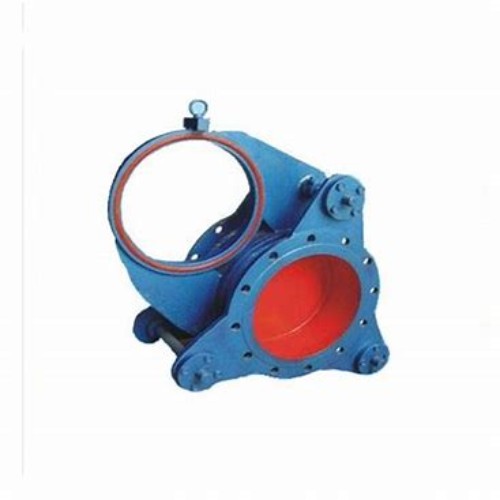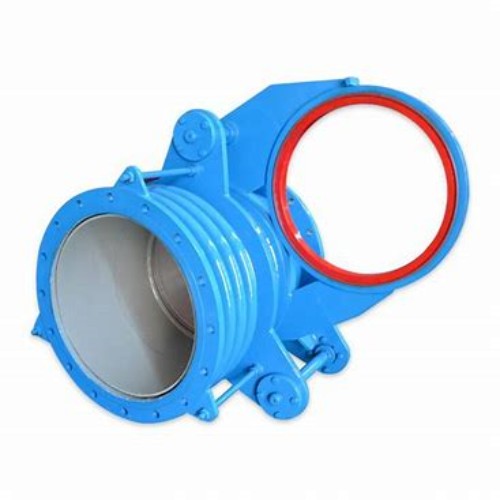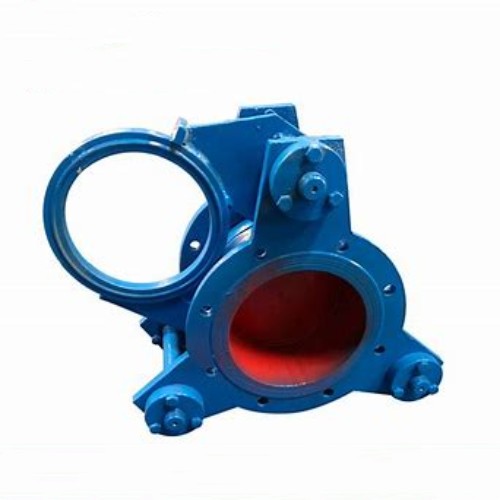Durable Sprinkler System Manual Valves for Reliable Water Flow
The Essential Role of Sprinkler System Manual Valves in Industrial Safety and Efficiency
In complex industrial landscapes, the integrity and reliability of fluid control systems are paramount. While automated systems often take center stage, the indispensable role of robust and precisely engineered sprinkler system manual valves cannot be overstated. These critical components serve as the frontline for isolation, maintenance, and emergency control within pipeline networks, ensuring operational continuity and, crucially, personnel and asset safety. From preventing backflow in water treatment facilities to isolating sections for maintenance in petrochemical plants, manual valves provide the tactile, dependable control required in environments where failure is not an option. This comprehensive guide delves into the technical intricacies, application diversity, and strategic importance of these vital industrial assets.
The demand for high-performance manual valves continues to grow, driven by stringent safety regulations, the need for reduced downtime, and increasing automation complexities that still require manual overrides. Understanding their manufacturing, technical specifications, and strategic deployment is crucial for B2B decision-makers, procurement specialists, and engineering teams aiming to optimize their operational frameworks.
Industry Trends and Market Dynamics for Industrial Valves
The industrial valve market, inclusive of the segment concerning sprinkler system manual valves, is experiencing significant evolutionary shifts. Key trends include a heightened focus on smart manufacturing (Industry 4.0), demanding valves with enhanced material science for extreme conditions (high pressure, high temperature, corrosive media), and improved cybersecurity measures for integrated control systems. There's also a clear move towards sustainable and energy-efficient designs, minimizing fugitive emissions and reducing operational power consumption. Furthermore, the global drive for digitalization is pushing manufacturers to incorporate IoT capabilities into even manual valves, allowing for better tracking, predictive maintenance, and operational insights, though their core function remains purely mechanical.
According to a 2023 report by Grand View Research, the global industrial valves market size was valued at USD 77.2 billion in 2022 and is expected to grow at a compound annual growth rate (CAGR) of 4.5% from 2023 to 2030. This growth is largely attributable to expanding infrastructure projects, increasing demand from oil & gas, power generation, and water & wastewater treatment sectors, all of which heavily rely on robust manual isolation and control valves. The adoption of advanced materials like super duplex stainless steel and exotic alloys for superior corrosion resistance and longevity is also a defining trend.

Manufacturing Process of High-Performance Industrial Manual Valves
The production of industrial manual valves, including those suitable for sprinkler system manual valves applications, is a sophisticated process demanding precision engineering and stringent quality control. A typical manufacturing process flow ensures the final product meets exacting performance and safety standards:
Process Flow Stages:
- Material Sourcing & Preparation: High-grade raw materials such as ASTM A216 WCB (carbon steel), ASTM A351 CF8M (316 stainless steel), or ductile iron (ASTM A536) are selected based on application requirements (e.g., pressure, temperature, corrosive media). Materials undergo rigorous chemical composition analysis to ensure compliance with international standards (e.g., ASTM, EN).
-
Casting or Forging:
- Casting: Molten metal is poured into molds to create valve bodies, bonnets, and discs. This process is cost-effective for complex shapes and larger valves. Post-casting, components undergo heat treatment (e.g., annealing, normalizing) to relieve internal stresses and improve mechanical properties.
- Forging: Used for smaller, high-pressure valves, forging involves shaping solid metal through hammering or pressing. This method yields components with superior grain structure, strength, and integrity, crucial for critical service applications.
- CNC Machining: Precision machining using Computer Numerical Control (CNC) equipment shapes the cast or forged blanks into final dimensions. This includes creating sealing surfaces, threading, drilling bolt holes, and machining internal flow passages to tight tolerances, ensuring optimal performance and leak-tightness.
- Surface Treatment & Coating: Depending on the application, valve components may undergo surface treatments such as nitriding, hard chroming, or specialized coatings (e.g., epoxy, PTFE) to enhance corrosion resistance, wear resistance, or reduce friction.
- Assembly: Components (body, bonnet, disc/wedge, stem, packing, gland, handwheel) are meticulously assembled in a clean environment. Gaskets and packing materials are carefully installed to ensure zero fugitive emissions.
-
Testing and Quality Assurance: Every valve undergoes rigorous testing before shipment.
- Hydrostatic Test (Shell Test): Performed to verify the pressure-retaining capability of the valve body, typically to 1.5 times the nominal pressure rating, as per API 598 or ISO 5208.
- Low Pressure Air Seat Test: Confirms the leak-tightness of the seat against low-pressure air, ensuring bubble-tight shut-off.
- High Pressure Liquid Seat Test: Verifies seat sealing under full rated pressure.
- Fugitive Emission Testing: Increasingly important, often to ISO 15848-1 or API 622, to ensure minimal leakage from the stem packing, critical for environmental compliance and safety.
- Non-Destructive Testing (NDT): Techniques like radiography, ultrasonic testing, magnetic particle inspection, and dye penetrant inspection are used to detect internal flaws in castings or welds.
- Finishing & Packaging: Valves are cleaned, painted, and carefully packaged to prevent damage during transit, often with protective covers for flange faces and documentation.
The typical service life of a well-engineered industrial manual valve can extend beyond 20-30 years with proper maintenance, significantly contributing to the long-term operational efficiency of critical infrastructure.
Technical Specifications and Parameters
Understanding the technical specifications of sprinkler system manual valves is crucial for proper selection and integration. Key parameters include nominal size, pressure rating, material construction, and temperature limits. Here’s a detailed look at common specifications, often referencing the F43CX manual fan blind valve or similar industrial manual valves:
| Parameter | Description/Range | Relevant Standards |
|---|---|---|
| Nominal Diameter (DN/NPS) | DN100 - DN1600 (NPS 4" - 64") | ASME B16.10, EN 558 |
| Nominal Pressure (PN/Class) | PN6, PN10, PN16, PN25, PN40 (Class 150, 300) | EN 1092-1, ASME B16.5 |
| Body Material | Cast Iron (HT200), Ductile Iron (QT450-10), Carbon Steel (WCB), Stainless Steel (CF8, CF8M, CF3M), Duplex/Super Duplex Steel | ASTM A216, A351, A536 |
| Disc/Gate Material | Carbon Steel, Stainless Steel, Brass, Bronze, with resilient or metal seating | ASTM A182, A351 |
| Sealing Material | EPDM, NBR, FKM, PTFE, Metal-to-Metal | ASTM D2000 |
| Operating Temperature | -29°C to +425°C (Material Dependent) | ASME B16.34 |
| Connection Type | Flanged (RF, FF), Wafer, Lug, Butt-Weld | ASME B16.5, B16.47 |
| Actuation Type | Handwheel, Gearbox, Chainwheel, Lever | API 6FA, ISO 5210 |
| Testing Standards | Hydrostatic, Seat Leakage, Fugitive Emissions | API 598, ISO 5208, ISO 15848-1 |
The design parameters like Face-to-Face dimensions (as per ASME B16.10 or EN 558) ensure interchangeability. Valve coefficient (Cv or Kv) is critical for flow calculations, though for isolation valves like blind valves, the focus is on achieving zero leakage (bubble-tight shut-off).
Application Scenarios and Target Industries
Sprinkler system manual valves and similar industrial manual isolation valves are indispensable across a wide array of demanding industries, where their robust construction and reliable operation are critical for safety, maintenance, and process control.
- Petrochemical and Oil & Gas: Essential for isolating sections of pipelines, reactors, and storage tanks for maintenance, repairs, or emergency shutdowns. The F43CX manual fan blind valve, with its positive isolation capabilities, is particularly vital in these sectors to prevent catastrophic spills or leaks, ensuring safety before personnel enter confined spaces or conduct hot work.
- Metallurgy and Steel Mills: Used in water circulation systems, cooling lines, and gas supply lines. The ability of these valves to withstand high temperatures and abrasive media is paramount for continuous operation and safety in blast furnaces and rolling mills.
- Water Supply & Drainage / Wastewater Treatment: Critical for isolating sections of municipal water networks for repairs, controlling flow in treatment plants, and preventing backflow contamination. Corrosion resistance is a key advantage here.
- Power Generation (Thermal, Nuclear, Hydro): Manual valves regulate steam, water, and fuel lines, isolate equipment for maintenance, and serve as emergency shut-off points. High-pressure and high-temperature resistance, along with absolute reliability, are non-negotiable.
- Mining: For slurry transport, dewatering, and chemical processing. Valves must be designed to handle abrasive slurries and corrosive chemicals, ensuring extended service life and minimal operational interruptions.
- HVAC and Building Management: While often smaller in scale, manual valves are integral to controlling water and steam flow in large commercial and industrial HVAC systems, allowing for zoning, balancing, and maintenance.

Key Technical Advantages
The technical advantages of well-designed industrial sprinkler system manual valves contribute significantly to operational excellence:
- Absolute Isolation and Safety: Valves like blind valves (e.g., F43CX) provide positive isolation, physically blocking the flow, which is crucial for safety-critical applications like process lockout/tagout procedures. This ensures zero leakage, a significant advantage over standard gate or ball valves where minor seepages can occur.
- Corrosion Resistance: Utilizing materials such as 316L stainless steel, super duplex alloys, or advanced coatings (e.g., fusion-bonded epoxy) extends valve life in highly corrosive environments (e.g., acidic slurries, saltwater, chemical processing), drastically reducing maintenance and replacement costs.
- Energy Saving: Optimally designed valve internal structures minimize pressure drop across the valve in the open position, reducing the energy required for pumping fluids through the system. For specific valve types, this can translate into significant long-term operational savings.
- Reliability and Durability: Robust construction, precision machining, and adherence to international testing standards (e.g., API 6D for pipeline valves, API 600 for steel gate valves) ensure consistent performance under harsh conditions, leading to minimal downtime. Manufacturers often conduct cycle testing beyond standard requirements (e.g., 10,000 cycles for quarter-turn valves) to prove longevity.
- Low Maintenance: Self-lubricating stem packings, durable seat materials, and simple mechanical designs contribute to reduced maintenance requirements and total cost of ownership (TCO).
Vendor Comparison and Selection Criteria
Choosing the right supplier for industrial manual valves is a strategic decision that impacts project timelines, operational costs, and system reliability. Beyond basic product specifications, B2B buyers should evaluate vendors based on:
| Factor | Description/Evaluation Point | Importance Scale (1-5) |
|---|---|---|
| Certifications & Standards Adherence | ISO 9001 (Quality Management), API 6D/6A (Petroleum/Natural Gas), CE Marking (EU Compliance), SIL Certification (Safety Integrity Level) where applicable. | 5 |
| Engineering & Customization Capabilities | Ability to design and manufacture valves for specific media, temperature, pressure, or unique system integration requirements. | 4 |
| Track Record & Industry Experience | Years in business, portfolio of successful projects, references from major industrial clients, reputation for reliability. | 5 |
| After-Sales Support & Service Network | Availability of technical support, spare parts, field service, maintenance, and repair capabilities. Global reach for international projects. | 4 |
| Lead Time & Supply Chain Robustness | Reliable production schedules, ability to meet project deadlines, transparent communication on delivery. | 4 |
| Total Cost of Ownership (TCO) | Beyond initial purchase price, consider maintenance costs, energy efficiency, and expected service life. | 3 |
A thorough vendor evaluation process ensures long-term value and minimizes operational risks associated with critical components like sprinkler system manual valves.
Customized Solutions for Complex Industrial Needs
While standard valve configurations serve many applications, complex industrial processes often demand highly specialized solutions. Leading manufacturers offer extensive customization for sprinkler system manual valves and other industrial valves, including:
- Exotic Material Construction: For extreme corrosion (e.g., Hastelloy, Monel, Titanium) or ultra-high/low temperatures.
- Specialized Coatings & Linings: To enhance wear resistance, prevent sticking, or provide additional chemical inertness (e.g., glass lining, ceramic coating).
- Unique Connection Types: Custom flange drilling, specific butt-weld end preparations, or integration into proprietary manifold systems.
- Extended Bonnets/Stems: For cryogenic service or where insulation requirements necessitate.
- Specific Operating Mechanisms: Custom gearing for reduced torque, non-rising stems for compact installations, or specific locking devices for safety.
- Integrated Monitoring: Although manual, some customization may include provisions for position indicators or limit switches for integration with SCADA systems.
Engaging with a manufacturer that possesses robust R&D capabilities and a deep understanding of fluid dynamics and material science is crucial for successful customized valve projects.

Application Case Studies and Success Stories
Real-world applications demonstrate the tangible benefits of high-quality industrial manual valves:
Case Study 1: Petrochemical Plant Isolation for Turnaround
A major petrochemical facility required a robust and absolutely leak-proof isolation solution for a reactor unit during a scheduled maintenance turnaround. Standard gate valves had historically shown minor seepages, posing safety risks. The implementation of DN600 (NPS 24") F43CX manual fan blind valves, specifically chosen for their positive isolation mechanism and high-pressure capabilities (PN25), resulted in a completely zero-leakage isolation. This enhanced worker safety significantly, reduced inerting time, and contributed to a 15% reduction in turnaround duration due to increased confidence in equipment isolation. The plant reported an immediate improvement in safety protocol adherence and operational efficiency.
Case Study 2: Municipal Water Treatment Plant Upgrade
A large urban water treatment plant faced frequent downtime for repairs on their aging carbon steel isolation valves, especially in corrosive areas handling treated wastewater. By upgrading to ductile iron valves with fusion-bonded epoxy coating and stainless steel internals (DN800, PN10) for their main distribution lines, the plant achieved remarkable improvements. After five years in service, these valves exhibited no signs of corrosion or leakage, unlike their predecessors which required replacement every 2-3 years. This strategic investment in corrosion-resistant sprinkler system manual valves led to a 70% reduction in valve-related maintenance costs and ensured uninterrupted water supply to millions of residents.
Trustworthiness and Support: FAQs, Lead Times, Warranty, and After-Sales
Building trust with B2B clients goes beyond product quality. It encompasses transparency, reliable support, and clear commitments.
Frequently Asked Questions (FAQs)
Q: What is the typical lead time for custom industrial manual valves?
A: Lead times vary significantly based on complexity, material availability, and order volume. For standard configurations, expect 4-8 weeks. Highly customized solutions involving exotic materials or unique design may require 12-20 weeks. We provide a precise lead time upon quotation confirmation.
Q: How do your valves ensure minimal fugitive emissions?
A: Our valves are designed with advanced stem packing configurations, often utilizing chevron-type PTFE or graphite packing rings, and precision-machined stem surfaces. We conduct rigorous fugitive emission testing in accordance with ISO 15848-1 and API 622 standards to ensure compliance and environmental safety.
Q: What warranty do you offer on your industrial valves?
A: We offer a standard 12-month warranty from the date of commissioning or 18 months from the date of shipment, whichever comes first, against manufacturing defects and material failures. Extended warranties are available for specific project requirements.
Q: Can you provide engineering support for valve selection and system integration?
A: Absolutely. Our team of experienced application engineers is available to assist with valve sizing, material selection, flow analysis, and integration into existing or new pipeline systems, ensuring optimal performance and compliance with project specifications.
Lead Time & Fulfillment
Our streamlined manufacturing processes and robust supply chain enable efficient order fulfillment. Standard products are typically dispatched within 4-6 weeks, while large-scale projects or specialized valve orders are managed with transparent milestones and proactive communication to meet client schedules. Expedited manufacturing options are available for urgent requirements.
Warranty Commitments
Each of our industrial valves, including sprinkler system manual valves, is backed by a comprehensive warranty program. This covers material and workmanship defects, ensuring peace of mind for our clients. Our commitment extends to providing prompt resolution for any warranty claims, minimizing operational disruption.
Customer Support and After-Sales Service
Our dedication to client success extends far beyond the point of sale. We offer global after-sales support, including technical assistance, spare parts supply, on-site commissioning, preventative maintenance programs, and comprehensive training for your operational and maintenance teams. Our experienced field service engineers are available for troubleshooting and repairs, ensuring the long-term optimal performance of your valve assets.
Conclusion
The reliable operation of sprinkler system manual valves and other industrial manual valves is foundational to the safety, efficiency, and longevity of critical infrastructure across diverse sectors. By investing in meticulously engineered and rigorously tested valves from authoritative suppliers, industries can achieve superior operational control, enhance safety protocols, and significantly reduce lifetime ownership costs. As industrial processes evolve, the demand for robust, customizable, and high-performance manual isolation solutions will only intensify, solidifying their status as indispensable components of modern industrial ecosystems.
References
- Grand View Research. (2023). Industrial Valves Market Size, Share & Trends Analysis Report. Retrieved from https://www.grandviewresearch.com/industry-analysis/industrial-valves-market
- American Petroleum Institute (API). (2022). API 598: Valve Inspection and Testing.
- International Organization for Standardization (ISO). (2019). ISO 15848-1: Industrial valves - Measurement, test and qualification procedures for fugitive emissions - Part 1: Classification system and qualification procedures for type tests.
- American Society of Mechanical Engineers (ASME). (2020). ASME B16.5: Pipe Flanges and Flanged Fittings: NPS 1/2 Through NPS 24 Metric/Inch Standard.
- ASTM International. (2021). ASTM A216/A216M: Standard Specification for Steel Castings, Carbon, Suitable for Fusion Welding, for High-Temperature Service.
-
Breakthrough in Domestic Low Temperature Valve Technology in ChinaNewsAug.18,2025
-
From Machinery to Intelligent Brain: The Digital Transformation Wave of the Valve IndustryNewsAug.18,2025
-
PCVEXPO 2025NewsAug.18,2025
-
The Key to Fluid Control: Exploring the Advantages of Ball Valves in Industrial SystemsNewsJul.09,2025
-
The Versatile World of 1, 2, and 3 Piece Ball ValvesNewsJul.09,2025
-
Stainless Steel Ball Valves: The Ideal Choice for Efficient Flow ControlNewsJul.09,2025
-
Optimizing Fluid Control with Ball Float ValvesNewsJul.09,2025




